The Hubble Space Telescope is a general-purpose space telescope that operates in low Earth orbit.
Ground-based astronomical observatories are limited by the Earth's atmosphere, which partially or totally blocks some wavelengths of electromagnetic radiation, but the space-based Hubble Telescope is able to capture images of the universe in visible, ultraviolet, and infrared wavelengths from a privileged position above the distortions from Earth's atmosphere.
This way, the Hubble Space Telescope has studied more than 40,000 cosmic objects since its launch in 1990, according to NASA.
Many of these studies led to important discoveries. For example, scientists were able to narrow down the age of the universe from a range of ten to 20 billion years to roughly 13.7 billion years using the Hubble Telescope's measurements of Cepheid variable stars. From Hubble images, astronomists were able to detect four moons around Pluto (Nix and Hydra in 2005, Kerberos in 2011, and Styx in 2012) as well.
Hubble Telescope galaxy images
Hubble Space Telescope has been able to take photos of several galaxies across the universe. Here are some of the most outstanding ones.
1. NGC 1961
NGC 1961 is a spiral galaxy in the circumpolar constellation Camelopardalis.
Spiral galaxies represent up to 60 percent of the galaxies that we can find in the universe. NGC 1961, particularly, is an intermediate spiral galaxy, which means that it doesn't have a well-defined bar of stars at its center. But as an AGN (active galactic nuclei) galaxy, its center is very bright, and it could be outshining many of its stars.
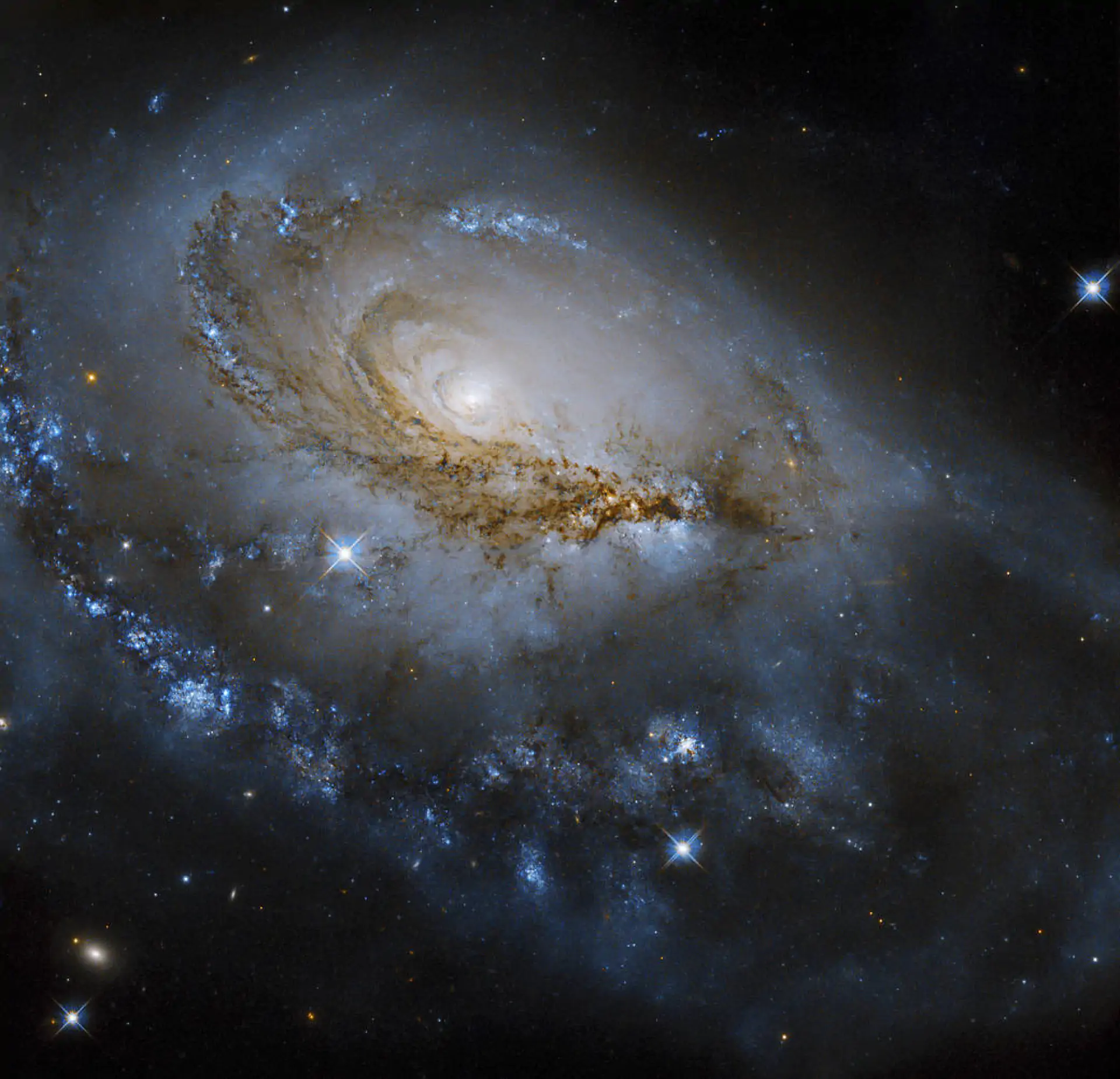
NASA, ESA, J. Dalcanton (University of Washington), R. Foley (University of California - Santa Cruz); Image processing: G. Kober (NASA Goddard/Catholic University of America)
NGC 1961 is located about 180 million light-years away and is likely more than 220,000 light-years across.
First spotted by William Herschel on December 3, 1788, NGC 1961 is part of a little group of nine galaxies with the same name.
2. CGCG 396-2
CGCG 396-2 is a multi-armed galaxy merger.
This means that CGCG 396-2 is the result of the collision of two or more galaxies involved in a violent gravitational interaction.
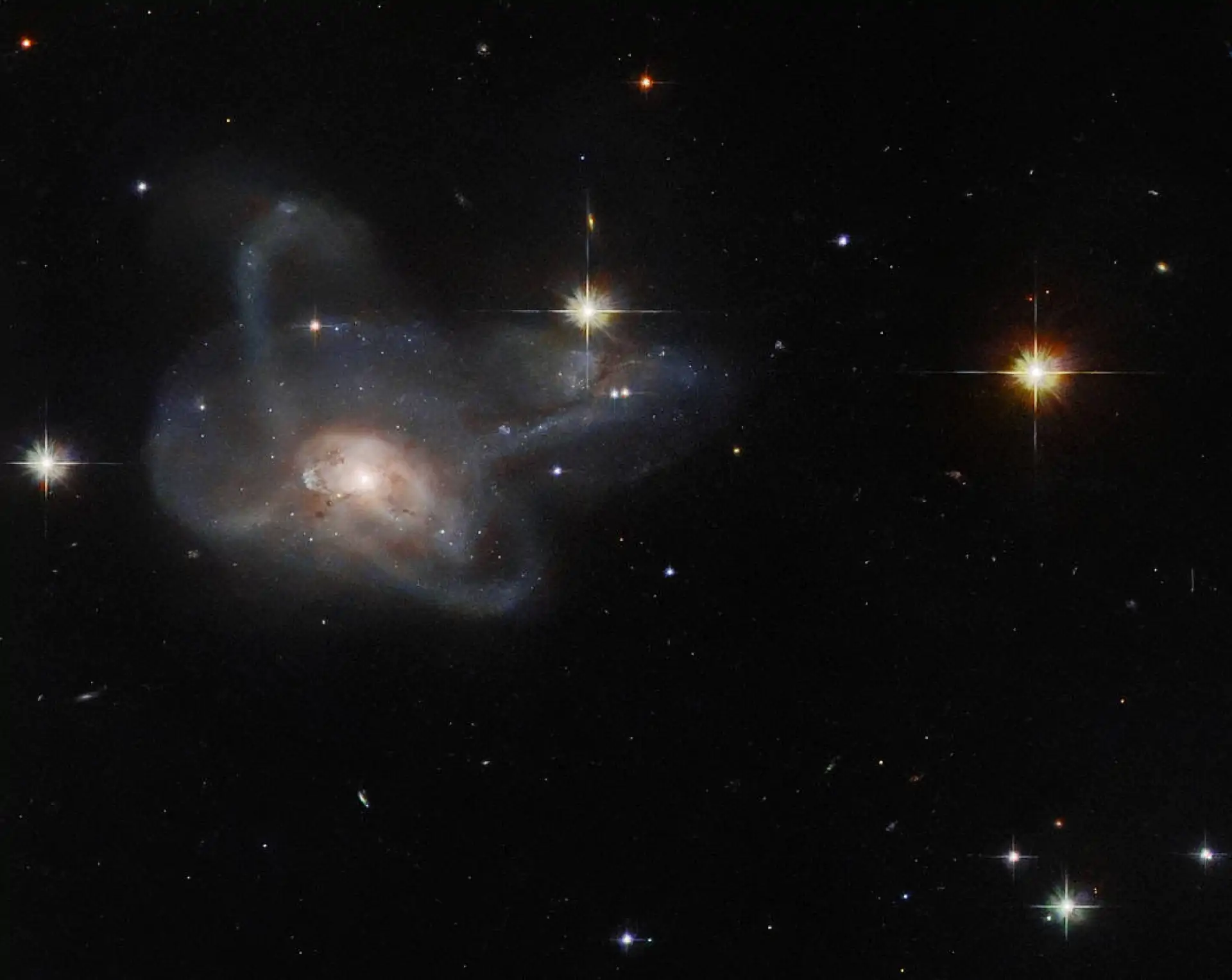
ESA/Hubble & NASA, W. Keel
This galaxy is located about 520 million light-years away in the constellation Orion.
According to NASA, CGCG 396-2 was selected as one of the most intriguing astronomical objects via public vote.
3. "Wild's Triplet"
This Hubble Telescope image shows two of the galaxies in the galactic triplet Arp 248 (also known as "Wild's Triplet"), connected by a bridge of stars and interstellar dust called a tidal tail.
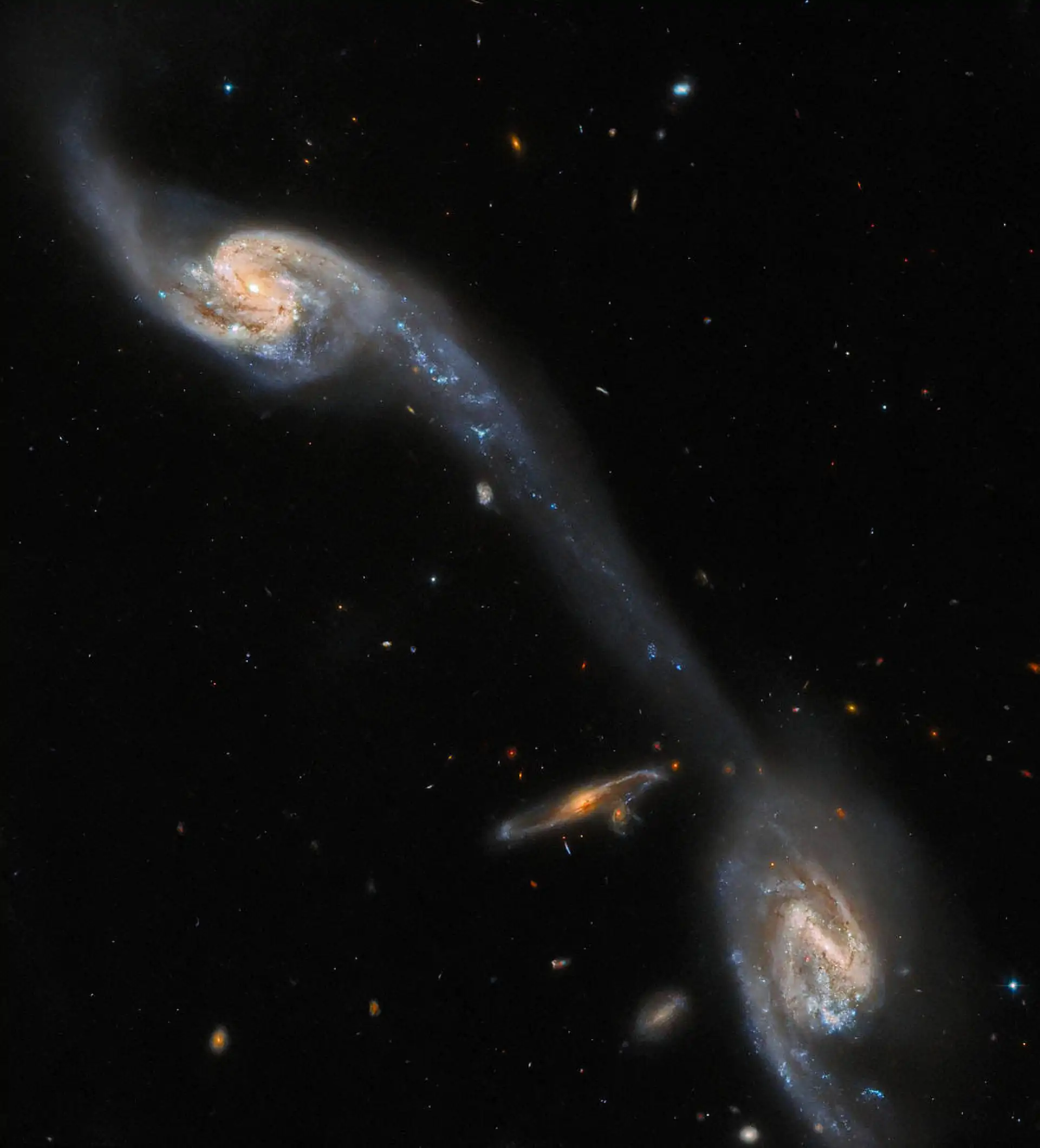
ESA/Hubble & NASA, Dark Energy Survey/Department of Energy/Fermilab Cosmic Physics Center/Dark Energy Camera/Cerro Tololo Inter-American Observatory/NOIRLab/National Science Foundation/AURA Astronomy; J. Dalcanton
Tidal tails are often the result of the tidal forces of two or more galaxies interacting.
4. UGC 10214 Tadpole Galaxy
Another example of a galaxy with a tidal tail is the UGC 10214 Tadpole Galaxy.
Here is a picture of it taken by Hubble Telescope's Advanced Camera for Surveys (ACS) in March 2002.
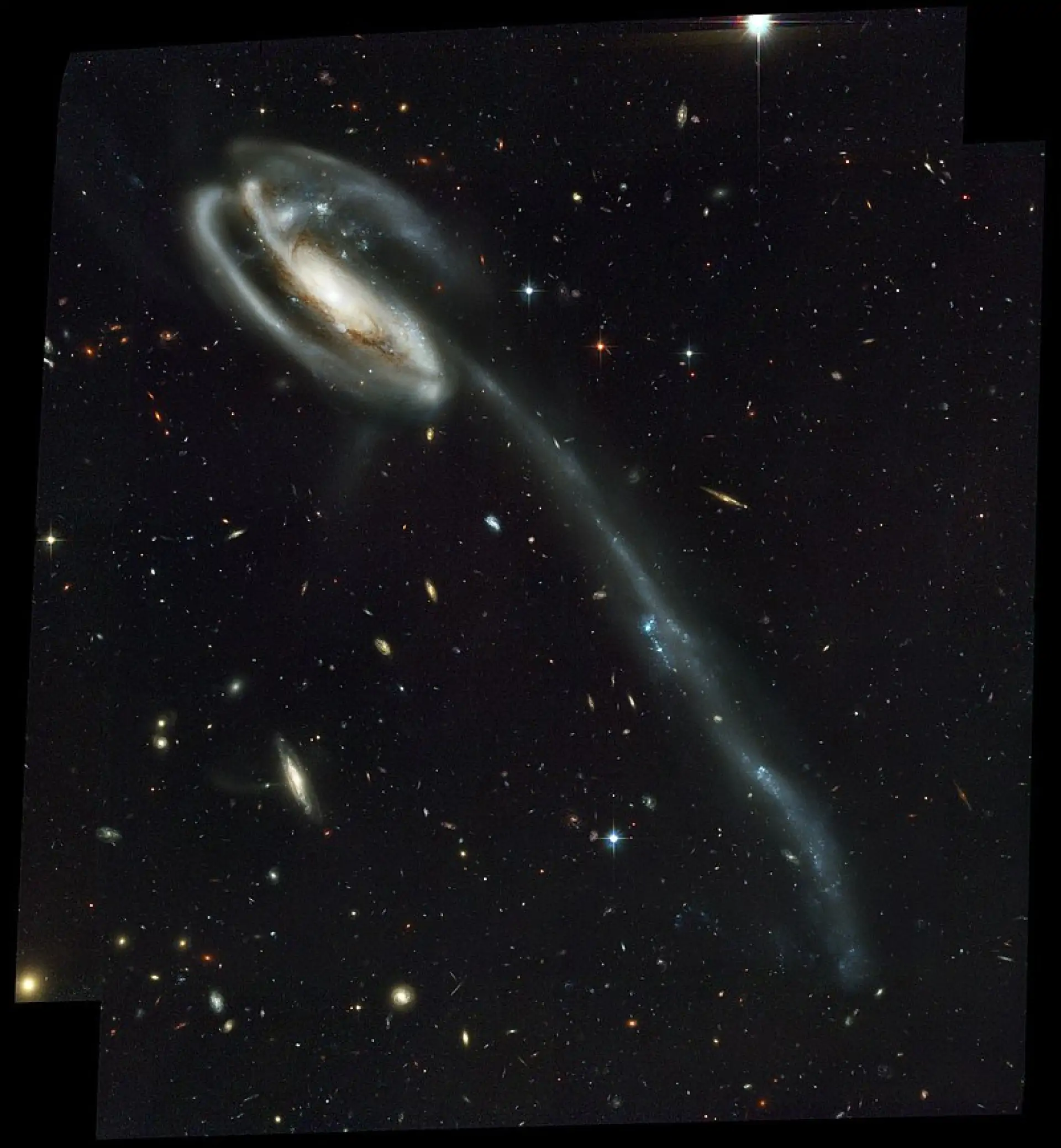
Wikimedia Commons/NASA, H. Ford (JHU), G. Illingworth (USCS/LO), M. Clampin (STScI), G. Hartig (STScI), the ACS Science Team, and ESA.
The "Tadpole" is an unusual spiral galaxy located about 420 million light-years from Earth in the constellation Draco.
5. IC 4271
Arp 40, or IC 4271, is the name of this pair of spiral galaxies in the Canes Venatici constellation, about 800 million light-years away from us.
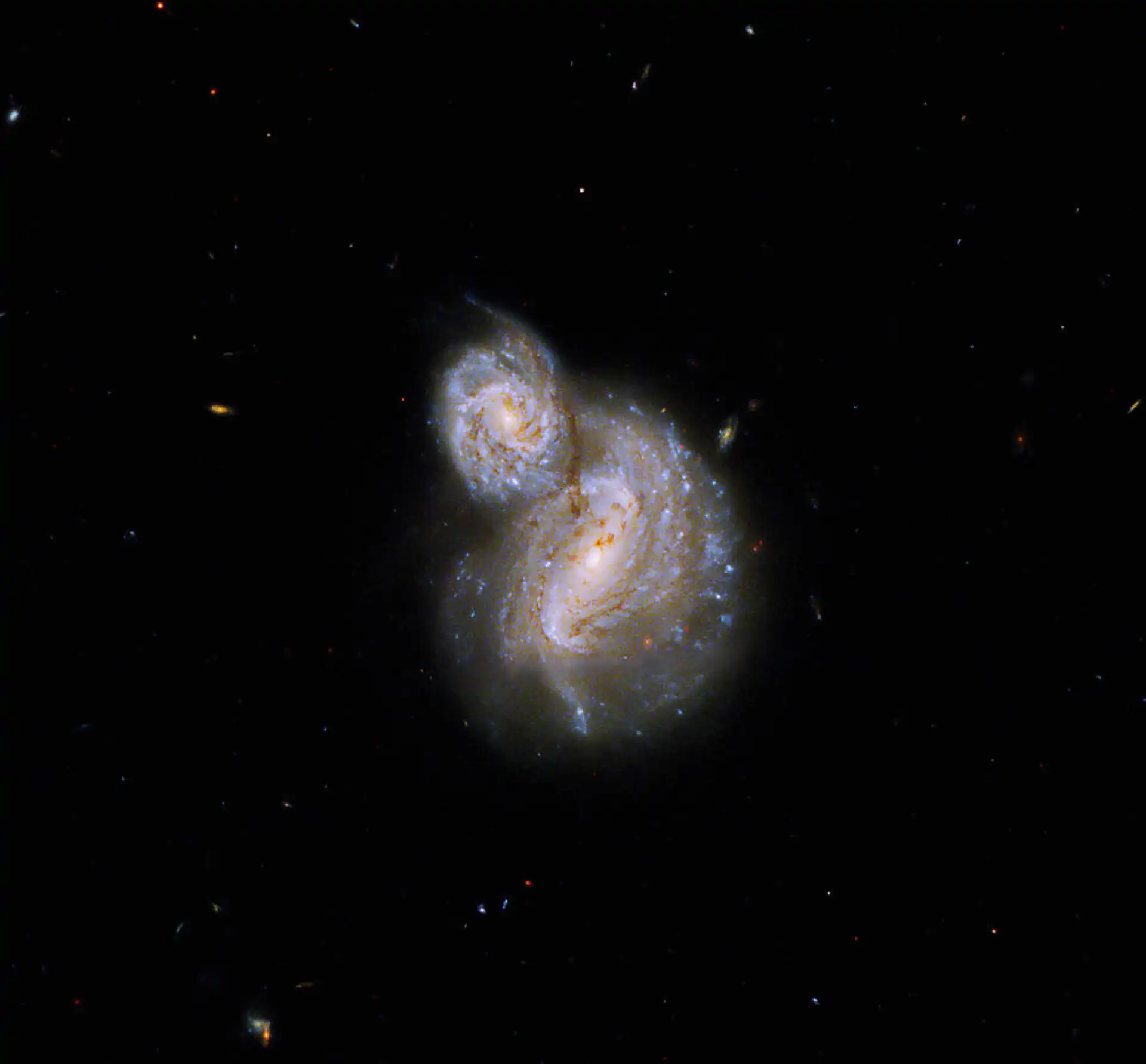
NASA, ESA, and B. Holwerda (University of Louisville Research Foundation, Inc.); Image processing: G. Kober (NASA Goddard/Catholic University of America)
6. NGC 474
NGC 474 is an elliptical galaxy located about 100 million light-years away in the constellation Pisces. It has the size of approximately two and a half Milky Ways.
Elliptical galaxies have spherical or oval shapes. This picture taken by Hubble Space Telescope shows the central region of NGC 474 with its spherical-shaped core and its layered shell-like structures.

NASA, ESA, and D. Carter (Liverpool John Moores University); Image processing: G. Kober (NASA Goddard/Catholic University of America)
As of today, scientists are not sure where those shells come from, but they believe that they could be the result of a collision with another galaxy or the absorption of a smaller galaxy. An absorbed galaxy could create waves, and those waves could form shells.
7. VV-689 system
Nicknamed the Angel Wing, the VV-689 system features these merging galaxies captured by the Hubble Space Telescope in the middle of a collision.

ESA/Hubble & NASA, W. Keel
8. NGC 3147
This picture is one of the few Hubble telescope black hole images. It may not be directly visible to our eyes, but spiral galaxy NGC 3147 actually has a low-activity, supermassive black hole in its center.

NASA, ESA, S. Bianchi (Universita degli Studi Roma Tre University), A. Laor (Technion-Israel Institute of Technology), and M. Chiaberge (ESA, STScI, and JHU)
With the help of the Hubble Space Telescope, astronomers detected a thin disk of gas, dust, and stars around this black hole, rotating around it at more than ten percent of the speed of light.
NGC 3147 is located about 130 million light-years from Earth in the northern circumpolar constellation Draco.
9. Twin tails
On September 26, 2022, the Double Asteroid Redirection Test (DART) spacecraft intentionally crashed into Dimorphos, a small moonlet of asteroid Dydimos, to divert its orbit in the context of a planetary defense test.

NASA, ESA, STScI, Jian-Yang Li (PSI); Image Processing: Joseph DePasquale
The Hubble Space Telescope observed the Dydimos-Dimorphos system for the following weeks, capturing images of the formation of these two tails of impact debris and dust streaming from Dimorphos.
The twin tails are about 6,000 miles (10,000 kilometers) long, revealing the severity of the impact, which actually succeeded in altering the moonlet's orbit.
10. Chameleon Cloud Complex
The Chameleon Cloud Complex is a 65-light-year-wide star-forming region in the interstellar medium of the Orion Arm in the Milky Way.
In this Hubble composite image, we can see the dark clouds of dust where the stars are forming, plus clouds of dust reflecting the light of bright-blue young stars, clumps, and arcs of interstellar gas linked to protostars.

NASA, ESA, J. Dalcanton (University of Washington), R. Foley (University of California - Santa Cruz); Image processing: G. Kober (NASA Goddard/Catholic University of America)
These patches of nebulosity are known as Herbig-Haro objects.
The white-orange cloud at the bottom of the photo hosts one of these "newborn stars" at its center.




